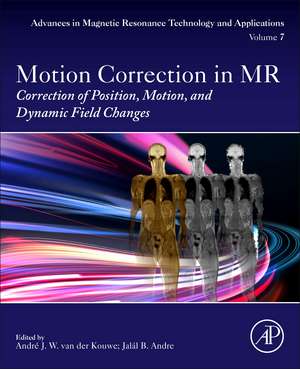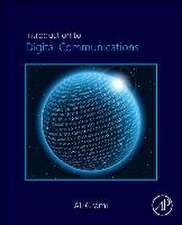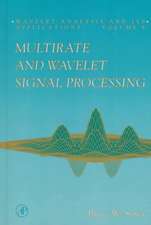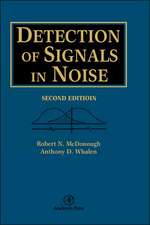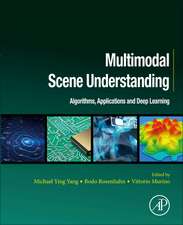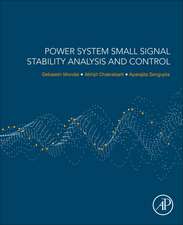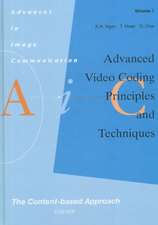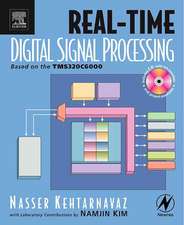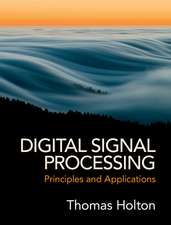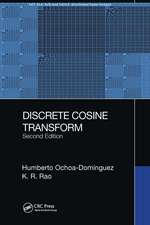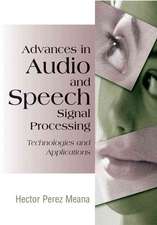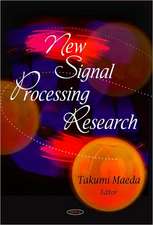Motion Correction in MR: Correction of Position, Motion, and Dynamic Field Changes: Advances in Magnetic Resonance Technology and Applications, cartea 6
Editat de Andre van der Kouwe, Jalal B. Andreen Limba Engleză Paperback – 26 oct 2022
Internal navigator-based approaches as well as external systems for estimating motion are also presented, along with practical applications in each organ system and each MR modality covered. This book provides a technical basis for physicists and engineers to develop motion correction methods, giving guidance to technologists and radiologists for incorporating these methods in patient examinations.
- Provides approaches for correcting scans prospectively and retrospectively
- Shows how motion and secondary effects such as field changes manifest in MR scans as artifacts and subtle biases in quantitative research
- Gives methods for measuring motion and associated field changes, quantifying motion and judging the accuracy of the motion and field estimates
Preț: 620.19 lei
Preț vechi: 915.55 lei
-32% Nou
Puncte Express: 930
Preț estimativ în valută:
118.69€ • 128.88$ • 99.70£
118.69€ • 128.88$ • 99.70£
Carte tipărită la comandă
Livrare economică 15-29 aprilie
Preluare comenzi: 021 569.72.76
Specificații
ISBN-13: 9780128244609
ISBN-10: 0128244607
Pagini: 620
Ilustrații: 200 illustrations (60 in full color)
Dimensiuni: 191 x 235 x 35 mm
Greutate: 1.05 kg
Editura: ELSEVIER SCIENCE
Seria Advances in Magnetic Resonance Technology and Applications
ISBN-10: 0128244607
Pagini: 620
Ilustrații: 200 illustrations (60 in full color)
Dimensiuni: 191 x 235 x 35 mm
Greutate: 1.05 kg
Editura: ELSEVIER SCIENCE
Seria Advances in Magnetic Resonance Technology and Applications
Public țintă
Scientists who conduct or support research in populations in which a part of the patient may move during imaging. Researchers, clinicians and technologists/radiographers using MR imaging, spectroscopy, or spectroscopic imaging, including neuroscientists and psychologists. Postdoctoral fellows, PhD and MD/PhD students, residents and fellows who image populations that might move during imagingCuprins
Part 1: Motion in MR scans
1. Clinical Impact: Why do Patients Move?
2. Impact of Motion on Research Studies
3. Cost Economy of Motion
4. Physical and Pharmacologic Solutions
5. Psychosocial Solutions
Part 2: Consistent Anatomical Selection
6. Automatically Detecting Anatomy
7. Anatomical Coordinate Systems
Part 3: Scan Quality and Motion Metrics
8. Metrics for Motion and MR Quality Assessment
9. Digital and Physical Phantoms for Motion Simulation
10. Analytics/Modality Log Files
Part 4: Dynamic Effects that Compromise Scan Quality in MRI
11. Types of Motion
12. Other Dynamic Changes
Part 5: Methods of Detecting Motion and Associated Field Changes in Real Time
13. External Trackers
14. k-Space Navigators
15. Image-Space Navigators
16. Navigators Without Gradients
Part 6: Retrospective Correction
17. Retrospective Correction of Motion in Images
18. Effects of Motion on Acceleration Techniques
19. Retrospective Correction of Secondary Effects of Motion
20. Machine Learning
Part 7: Prospective Correction
21. Prospective Real-Time Motion Correction and Reacquisition
22. Prospective B0 Correction
Part 8: Clinical Applications Beyond the Brain
23. Body Imaging
24. Musculoskeletal Imaging
25. Cardiac Imaging
Part 9: Technical Applications by Method
26. Spectroscopy, CEST and MT
27. High Resolution Structural Brain Imaging
28. Amplified MR and Physiological Motion
29. Diffusion Imaging
30. Non-Cartesian Imaging
31. Functional MRI
Part 10: Special Applications
32. Fetal and Placental Imaging
33. Neonatal and Pediatric Imaging
34. PET/MR
35. Non-Human Imaging
1. Clinical Impact: Why do Patients Move?
2. Impact of Motion on Research Studies
3. Cost Economy of Motion
4. Physical and Pharmacologic Solutions
5. Psychosocial Solutions
Part 2: Consistent Anatomical Selection
6. Automatically Detecting Anatomy
7. Anatomical Coordinate Systems
Part 3: Scan Quality and Motion Metrics
8. Metrics for Motion and MR Quality Assessment
9. Digital and Physical Phantoms for Motion Simulation
10. Analytics/Modality Log Files
Part 4: Dynamic Effects that Compromise Scan Quality in MRI
11. Types of Motion
12. Other Dynamic Changes
Part 5: Methods of Detecting Motion and Associated Field Changes in Real Time
13. External Trackers
14. k-Space Navigators
15. Image-Space Navigators
16. Navigators Without Gradients
Part 6: Retrospective Correction
17. Retrospective Correction of Motion in Images
18. Effects of Motion on Acceleration Techniques
19. Retrospective Correction of Secondary Effects of Motion
20. Machine Learning
Part 7: Prospective Correction
21. Prospective Real-Time Motion Correction and Reacquisition
22. Prospective B0 Correction
Part 8: Clinical Applications Beyond the Brain
23. Body Imaging
24. Musculoskeletal Imaging
25. Cardiac Imaging
Part 9: Technical Applications by Method
26. Spectroscopy, CEST and MT
27. High Resolution Structural Brain Imaging
28. Amplified MR and Physiological Motion
29. Diffusion Imaging
30. Non-Cartesian Imaging
31. Functional MRI
Part 10: Special Applications
32. Fetal and Placental Imaging
33. Neonatal and Pediatric Imaging
34. PET/MR
35. Non-Human Imaging
